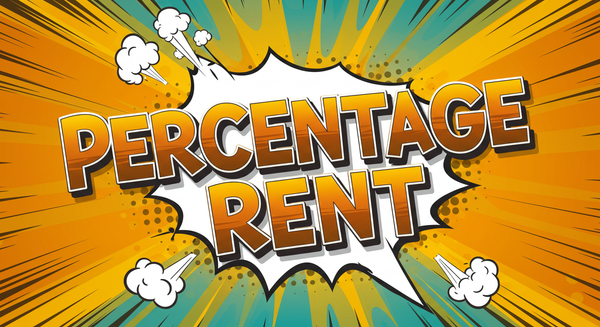Ground Lease in Property Management: Complete Guide for Landlords
The Empire State Building actually used to sit on ground leased land until the 1990s when the building owners purchased the underlying land to unify ownership

Here's a fascinating fact about ground leases: The World Trade Center complex operates under a 99-year ground lease arrangement with the Port Authority of New York and New Jersey, while the Empire State Building actually used to sit on ground leased land until the 1990s when the building owners purchased the underlying land to unify ownership.
These iconic properties demonstrate how ground leases can be incredibly profitable long-term investments, generating steady rental income for decades.
Unlike regular commercial lease agreements, ground leasing separates land ownership from building ownership. This creates unique opportunities for both landlords and tenants.
Whether you're managing a small portfolio or overseeing major commercial real estate developments, ground lease transactions can significantly impact your bottom line and operational strategy.
In this article, you'll learn: What ground leases mean in practical terms, how they work in real-world scenarios, legal requirements you must follow, and proven strategies for successful ground lease management.
What Is a Ground Lease?
Ground lease arrangements represent a unique form of lease agreement where land ownership remains separate from building ownership. At its core, a ground lease is a long term lease for land only, where the ground lease tenant typically constructs improvements and operates them for decades before eventually transferring everything back to the landowner.
These agreements differ significantly from traditional commercial lease arrangements. In a standard rental situation, you're leasing an existing building. With ground leases, you're leasing vacant or underdeveloped real property with the expectation that the tenant will build something substantial. The ground lease tenant owns whatever they build during the lease term, but the leased land itself remains with the original property owner.
Ground leases are also known as land lease agreements, leasehold interest arrangements, or ground rent contracts in different regions. The terminology can vary, but the fundamental ground lease structure remains consistent across markets. Some jurisdictions use specific terms like "redeemable ground rent" for tax purposes, which affects how these ground lease transactions are treated financially.
The typical modern ground lease involves lease term periods of 50 to 99 years, with 99 years being the longest possible under common law. These extended timeframes are necessary because tenants need sufficient time to recover their construction investments and generate returns. Shorter terms rarely work because lenders won't finance major improvements on real property the borrower doesn't own long-term. The Investopedia definition provides additional clarity on these temporal requirements.
Most ground leases operate as triple net lease arrangements, meaning ground lease tenants pay all expenses including taxes, insurance, maintenance, and construction costs. This net lease structure transfers operational responsibility from the landowner to the tenant, while the landowner receives steady rental income without development risks. For property management professionals, this creates different responsibilities compared to traditional capital improvements scenarios.
Typical Ground Lease Timeline: 99-Year Structure
(20 years)
(20 years)
(39 years)
Reversion
Impact & Applications: Why Ground Leases Matter for Property Managers
Operational Impact
Ground leases significantly affect property management operations through their unique financial structure and long term lease nature. The most immediate impact involves cash flow management, as these arrangements typically generate steady, predictable rental income for landowners while requiring substantial upfront investment from ground lease tenants.
For property management professionals overseeing ground lease portfolios, the operational burden differs markedly from traditional rental management. Since tenants handle most property expenses under triple net lease arrangements, property management teams focus more on compliance monitoring, lease agreement administration, and long-term relationship management rather than day-to-day maintenance coordination.
The financial implications can be substantial. A significant portion of improved land in the United States operates under ground lease arrangements, particularly in high-value urban markets where land acquisition costs make outright purchase prohibitive for many developers. This prevalence means property management professionals in major metropolitan areas frequently encounter these ground lease structures.
The extended lease terms create unique challenges for institutional knowledge and record-keeping. Property management companies must maintain detailed documentation and compliance systems that can function effectively across multiple decades. Unlike annual lease renewals, ground lease management requires systems designed for multi-generational continuity.
Risk profiles also shift significantly with ground leases. While landowners avoid development and construction risks, they face different challenges around tenant creditworthiness, market changes, and eventual property condition upon lease expiration. Missing key compliance details in ground lease management could cost property owners hundreds of thousands in lost rental income or legal complications.
For tenant relationships, ground leases create a more collaborative dynamic compared to traditional landlord-tenant arrangements. Since both parties have substantial long-term investments at stake, successful ground lease management often requires more sophisticated communication and problem-solving approaches than typical commercial lease relationships.
Subordinated vs. Unsubordinated Ground Lease Decision
How Subordination Affects Risk and Financing Options
✅ Better loan terms
⚠️ Landowner risks land
⚠️ Higher landowner risk
✅ Lower landowner risk
⚠️ Harder to finance
⚠️ Higher interest rates
Real-World Application
Example: Austin Housing Finance Corporation Affordable Housing Development
- Challenge: The Austin Housing Finance Corporation needed to develop affordable rental housing while maintaining long-term control over valuable public land. Traditional sale arrangements would have resulted in permanent loss of public assets. Conventional commercial lease agreements wouldn't provide developers sufficient security for major construction projects requiring ground lease financing.
- Solution: The organization implemented ground lease structures allowing private developers to construct and operate affordable housing projects on city-owned leased land. These ground lease agreements included specific compliance requirements for Low Income Housing Tax Credits under Section 42 of the Internal Revenue Code. This ensured the developments maintained affordability requirements while providing developers reasonable returns through their leasehold interest.
- The ground lease terms included detailed provisions for rent escalation, maintenance responsibilities, and reversion procedures. Developers received leasehold interest arrangements sufficient to secure construction financing from lenders. Meanwhile, the city maintained ultimate land ownership. Property management teams coordinated between multiple stakeholders including tax credit agencies, leasehold lenders, and municipal authorities.
- Outcome: The program successfully delivered hundreds of affordable housing units while preserving public land ownership. Developers achieved adequate returns to justify their investments. The city maintained long-term control over strategic real property. The ground lease structure enabled leasehold financing that wouldn't have been available under shorter-term arrangements.
Takeaway: Ground leases can solve complex property development challenges by balancing public policy objectives with private market needs. For property management professionals, success requires understanding multiple regulatory frameworks. You'll need to coordinate between diverse stakeholder groups with different priorities and timeframes.
Legal & Compliance Essentials
Ground lease management involves complex legal requirements that vary significantly by jurisdiction and property type. Federal regulations play a major role, particularly for projects involving government agencies or federally insured ground lease financing.
For housing-related ground leases, HUD maintains extensive requirements. They require minimum lease terms of 75 years for capital advance projects. They also mandate agency approval for all ground rent amounts. These federal oversight requirements create additional compliance layers for property management professionals working with affordable housing developments. The complete HUD handbook provides detailed guidance on these requirements.
Virginia's Residential Ground Rent Act provides a perfect example of how state laws differ. The state requires specific disclosure formats, assignability provisions, and recordation requirements that don't exist in other states. You can review the complete Virginia regulations to understand these specific requirements. Property management professionals must understand local requirements in each jurisdiction where they operate ground leases.
Here's what you need to watch out for:
Key Legal Pitfalls:
- Subordination decisions - Understanding whether the ground lease is subordinated to construction financing affects both risk exposure and future leasehold financing options
- Environmental compliance - Public housing authorities must complete environmental reviews under 24 CFR part 58 before executing ground lease agreements. This creates timing challenges for property development schedules
- Disposition approvals - Government entities often require specific approvals before entering ground lease transactions. These approvals can delay project timelines significantly
- Tax classification - Ground leases exceeding certain terms may be treated as sales for tax purposes under federal regulations. This significantly affects financial planning
Documentation requirements are particularly stringent for federally insured projects. All ground lease provisions must comply with program obligations. Conflicts with federal requirements can invalidate leasehold financing arrangements.
- Do maintain comprehensive records throughout the entire lease term.
- Do not execute ground lease agreements without proper environmental reviews and agency approvals when required.
The certificate of title process becomes more complex with ground leases. Title insurance companies must account for split ownership interests between land and improvements on leased land. Understanding color of title in property management becomes especially important when dealing with these complex ownership structures.
Best Practices for Ground Lease Management
1. Implement Comprehensive Documentation Systems
Establish detailed record-keeping protocols from lease inception through the entire ground lease term. Given lease durations spanning 50-99 years, property management systems must ensure institutional knowledge preservation across multiple generations of staff. Create standardized files for rent escalation schedules, insurance certificates, tax documentation, and compliance reports. Include digital backup systems and regular archive audits to prevent information loss that could affect ground lease payments or lease compliance.
2. Structure Clear Rent Escalation Mechanisms
Design rent adjustment provisions that balance landowner protection with tenant feasibility. Most successful ground leases include periodic rent increases tied to property income or inflation indices rather than arbitrary percentage bumps. This approach protects landowners against market changes while ensuring ground lease tenants can absorb increases based on actual property performance. Document all rent escalation triggers clearly and establish annual review procedures for ground lease payments.
3. Coordinate Complex Financing Requirements
Understand subordination implications and work closely with construction lenders throughout the property development process. Unsubordinated ground leases limit lender security to leasehold interest only, while subordinated ground leases allow liens against the underlying land. Each structure affects leasehold financing availability and terms. Maintain ongoing communication with tenant lenders to ensure compliance with loan covenants and avoid conflicts that could jeopardize the ground lease arrangement.
4. Monitor Long-Term Compliance and Condition Standards
Establish regular inspection protocols and compliance monitoring systems appropriate for extended lease terms. Unlike annual lease renewals, ground leases require sustained oversight of property condition, insurance coverage, tax payments, and regulatory compliance. Create milestone review procedures every 5-10 years to assess property condition and ensure tenant obligations are being met. This proactive approach prevents small issues from becoming major problems over decades-long lease periods and helps avoid tenant default situations.
Advantages and Disadvantages of Ground Leases
What are the advantages of a ground lease in commercial real estate?
Ground leases offer compelling benefits for both landowners and tenants. For property owners, ground leases provide steady rental income without development risks or construction headaches. You collect ground lease payments for decades while someone else handles building, maintaining, and operating the property. The land appreciates in value over time. You eventually get all improvements back at lease expiration. It's like having your cake and eating it too.
For tenants, ground leases solve the land acquisition problem in expensive markets. Instead of paying millions upfront for prime real estate, developers can access valuable locations with manageable lease payments. This preserves capital for construction and operations. It also provides long-term site control through the leasehold interest. Think of it as a lease-to-own arrangement that lasts decades. This model has become increasingly popular in build-to-rent communities where developers need long-term site control without massive upfront land costs.
Ground leases also offer tax advantages. Landowners can defer capital gains taxes for decades while receiving steady income. Tenants can often deduct ground rent payments as operating expenses. This improves cash flow compared to mortgage payments on purchased land. This tax treatment differs significantly from how traditional rental properties handle property tax obligations, making ground leases particularly attractive for certain investment strategies.
What are the disadvantages of a ground lease in commercial real estate?
Ground leases create significant challenges that property managers must understand. The biggest risk involves lease expiration. After 50-99 years, tenants lose their entire investment when buildings revert to the landowner. This creates financing difficulties. Lenders worry about security that literally disappears at a fixed date.
Leasehold financing typically comes with higher interest rates and stricter terms than traditional mortgages. Lenders view leasehold mortgages as riskier because their collateral has an expiration date. Unsubordinated ground leases limit lender recovery options if the tenant defaults. It's like lending money on a car that turns into a pumpkin at midnight.
Control issues also plague ground lease relationships. Tenants can't make major changes without landowner approval. Property owners may restrict uses, transfers, or modifications that could affect long-term property value. These restrictions can limit business flexibility and growth opportunities.
Rent escalation clauses can create unpredictable costs. While ground rent starts reasonably, escalations tied to market rates or inflation can make properties uneconomical over time. Some ground leases include percentage rent clauses that increase costs when the business succeeds. Success becomes a penalty.
Key Questions Answered
What's the difference between ground leases and traditional commercial leases?
Ground leases involve land only, while traditional commercial leases involve existing buildings. In ground lease arrangements, tenants typically construct their own improvements and own those buildings during the lease term, whereas traditional tenants occupy existing structures owned by the landlord. Ground leases also involve much longer lease terms (50-99 years vs. 1-5 years) and different financial structures, with ground lease tenants usually responsible for all property expenses including taxes and insurance under triple net lease arrangements.
What happens to the buildings at the end of a ground lease?
All buildings and improvements automatically transfer to the landowner at lease expiration, typically without compensation to the tenant. This reversion represents one of the most significant aspects of ground lease structures. The property owner gains valuable assets built and maintained by the tenant over decades, while the ground lease tenant loses their entire investment in improvements.
Smart tenants plan for this reality by ensuring their lease term allows sufficient time to recover construction costs and generate reasonable returns. Many modern ground leases include renewal options or purchase rights that give tenants some protection against total loss of their investment.
What's the difference between a subordinated vs unsubordinated ground lease?
Subordinated ground leases allow lenders to foreclose on both the land and buildings, while unsubordinated arrangements limit lender security to the leasehold interest only. In subordinated ground leases, the landowner agrees to put their land ownership at risk if the tenant defaults on construction loans. This makes leasehold financing easier to obtain and often comes with better terms.
Unsubordinated ground leases protect the landowner's real property but make financing more difficult for tenants. Lenders can only foreclose on the leasehold interest, not the underlying land. This limitation typically results in higher interest rates and more conservative loan terms for property development projects.
Who owns the building erected on land with a ground lease?
The tenant owns the building during the lease term, but ownership transfers to the landowner at lease expiration. This split ownership structure distinguishes ground leases from traditional arrangements. The ground lease tenant holds full ownership rights to any improvements they construct, including the right to mortgage, sell, or modify the buildings subject to lease agreement restrictions.
This ownership arrangement affects everything from insurance requirements to tax obligations. Tenants pay property taxes on their improvements while landowners pay taxes on the underlying land value. Both parties typically carry separate insurance policies covering their respective ownership interests.
How is ground lease rent calculated and adjusted?
Ground lease rent is typically calculated based on a percentage of the land's fair market value, often 6-10% annually depending on market conditions and risk factors. Rent adjustments occur through predetermined rent escalation clauses tied to inflation indices, property income performance, or periodic reappraisals.
The specific calculation method should be clearly defined in the ground lease agreement, with many arrangements including both base rent and percentage rent components based on tenant revenues.
Understanding cap rates helps property management professionals evaluate appropriate ground rent levels and assess investment returns.
What are the tax implications of a ground lease in commercial real estate?
Ground leases create complex tax situations affecting both parties differently. Landowners typically treat ground lease payments as rental income subject to ordinary income tax rates. However, they can defer capital gains taxes that would apply if they sold the land outright. The land remains a depreciable asset for tax purposes, though depreciation periods may be extended.
Tenants generally deduct ground rent payments as operating expenses, reducing taxable income. They can depreciate buildings and improvements they construct, often using accelerated depreciation methods. However, leasehold interests may qualify for different depreciation periods than fee-simple ownership.
Tax treatment becomes particularly complex for ground leases exceeding certain terms. Long term leases over 99 years may be treated as sales for tax purposes, significantly affecting both parties' tax obligations.
The IRS guidance on redeemable ground rents provides specific criteria for determining tax treatment. Property management professionals should always consult tax advisors for specific situations.
Can ground lease terms change during the lease period?
Ground lease terms generally cannot be changed unilaterally, but modifications are possible through mutual agreement between property owner and ground lease tenant.
The long term lease nature of these arrangements makes them relatively inflexible compared to shorter commercial leases. However, both parties may agree to amendments addressing changed circumstances, such as zoning modifications, environmental requirements, or leasehold financing needs.
Any modifications must be properly documented and may require lender approval if the leasehold interest secures financing. Some modern ground leases include specific provisions for renegotiation at predetermined intervals during the lease period.
Conclusion & Resources
Ground lease management represents a sophisticated specialty within property management that requires understanding of property development finance, regulatory compliance, and long-term strategic planning.
These ground lease arrangements offer unique benefits for both landowners and developers, but success depends on careful attention to legal requirements and operational details.
Key takeaways for property management professionals:
- Ground leases separate land ownership from building ownership, creating different risk profiles and management responsibilities compared to traditional commercial real estate rentals
- Long-term success requires comprehensive documentation systems that can maintain institutional knowledge across decades-long lease terms and prevent tenant default situations
- Regulatory compliance varies significantly by jurisdiction and project type, particularly for government-involved or federally financed ground lease transactions
The complexity of ground lease arrangements makes them unsuitable for every situation, but they can solve challenging property development problems while providing steady rental income for property owners.
For property management professionals, building expertise in ground leasing opens opportunities to work with sophisticated commercial real estate developments and public-private partnerships.
Ready to expand your property management expertise? Explore our complete resource library covering everything from build-to-rent communities to advanced co-signer agreements in leasing strategies.
Legal Disclaimer: The information on this website is sourced from publicly available materials and is provided for general informational purposes only. It is not intended as legal, financial, or accounting advice. LandlordDoc.com makes no guarantees about the accuracy or completeness of the information and assumes no liability for any errors, omissions, or outcomes related to its use.





